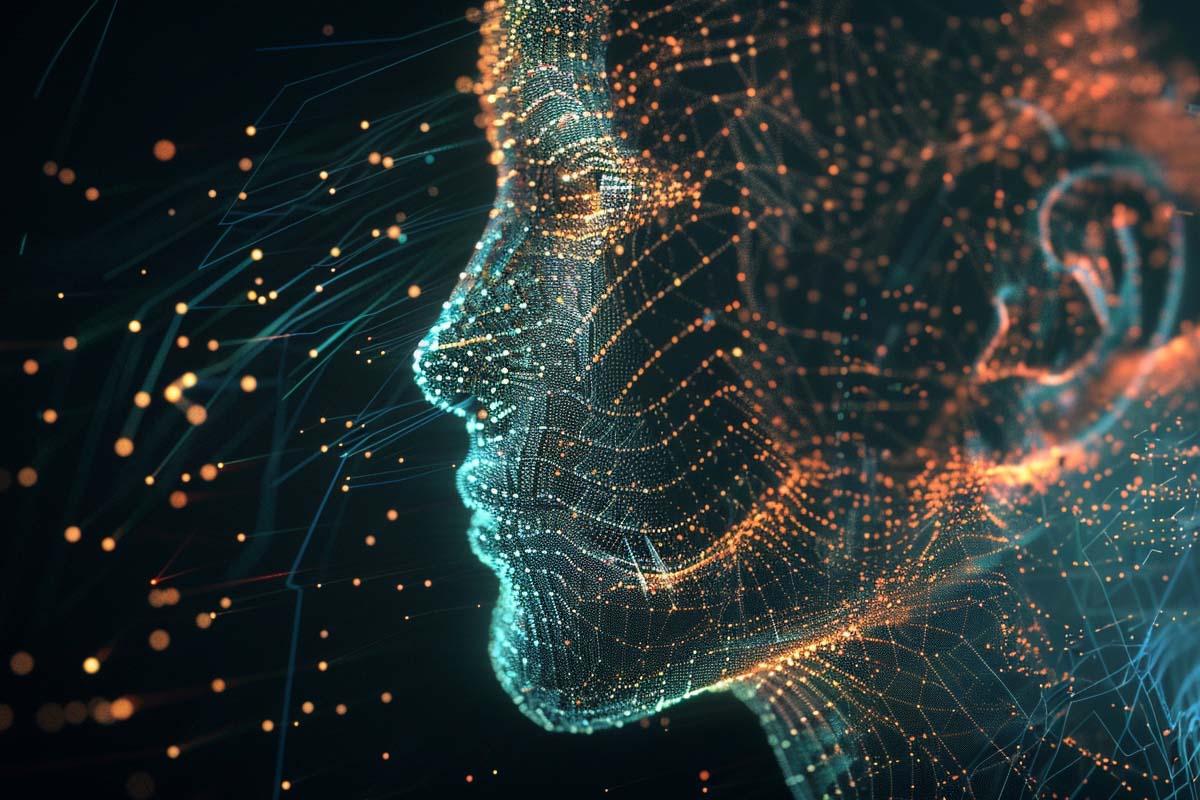Generative AI and AI-Augmented Development are revolutionizing how we create and code. Generative AI focuses on creating new content, from art to text, that’s indistinguishable from human-made. AI-Augmented Development, on the other hand, enhances software development processes with AI’s capabilities, making coding faster, more efficient, and less prone to errors. Together, they’re setting the stage for a future where AI partners in our creative and technical endeavors.
The Evolution of Generative AI
Generative AI has journeyed from simple algorithms to sophisticated neural networks. Early forms of Generative AI involved rule-based systems that could generate structured data. The introduction of neural networks, especially deep learning, marked a turning point, enabling AI to produce increasingly complex and varied outputs. Milestones include the development of GANs and the launch of GPT models, which demonstrated AI’s potential to create human-like text, images, and more.
Key Technologies Behind Generative AI
Deep learning, a subset of machine learning, is at the heart of Generative AI’s success, enabling models to learn from vast amounts of data. GPT models, like GPT-3, use transformer architectures to generate text that can mimic human writing styles. Meanwhile, VAEs and GANs have become foundational in creating realistic images and media, showcasing the diversity of Generative AI’s capabilities.
Diving deeper into the key technologies behind Generative AI, we uncover the intricate workings and broad applications of these innovations. By understanding the principles and mechanisms of each, we can appreciate their impact and potential.
Deep Learning and Neural Networks
Deep learning is a subset of machine learning that utilizes artificial neural networks with many layers (hence “deep”) to model complex patterns in data. Neural networks, inspired by the human brain’s architecture, consist of interconnected nodes (neurons) that process input data and can learn to perform specific tasks without being explicitly programmed for them.
- How it Works: Deep learning models learn to recognize patterns in data by adjusting the connections (weights) between neurons through a process called backpropagation. This allows the model to make increasingly accurate predictions or decisions as it is exposed to more data.
- Applications: Beyond Generative AI, deep learning powers advancements in image and speech recognition, natural language processing, and autonomous vehicles, showcasing its versatility and transformative potential.
Generative Pre-trained Transformer (GPT) Models
GPT models, developed by OpenAI, represent a significant leap in natural language processing (NLP). These models are pre-trained on vast datasets to understand and generate human-like text, then fine-tuned for specific tasks or applications.
- How it Works: GPT models use a transformer architecture, which allows them to consider the context of each word in a sentence (or each sentence in a paragraph) to generate coherent and contextually relevant text. The model’s ability to generate text improves as it processes more data.
- Applications: GPT models are used for a wide range of applications, including chatbots, content creation, summarization, translation, and even coding assistance, demonstrating their adaptability and power.
Variational Autoencoders (VAEs)
VAEs are a type of neural network used for generating new data that’s similar to the training data. They’re particularly well-suited for tasks where you want to model complex distributions of data, like images or sounds, in a compressed representation.
- How it Works: A VAE consists of an encoder, which compresses input data into a smaller, dense representation, and a decoder, which reconstructs the input data from this compressed form. The “variational” part comes from the way these models are trained to optimize the parameters of the distribution representing the data, making them powerful for generative tasks.
- Applications: VAEs are widely used in generating realistic images, designing new molecules in drug discovery, and even in anomaly detection, where their ability to model complex data distributions is a key advantage.
Generative Adversarial Networks (GANs)
GANs involve a pair of neural networks: a generator that creates data and a discriminator that tries to distinguish between real and generated data. This adversarial process enables the generation of highly realistic data.
- How it Works: The generator network generates new data instances, while the discriminator evaluates them against real instances, providing feedback to the generator. Over time, the generator improves its ability to produce realistic data, and the discriminator becomes better at distinguishing real from fake, in a sort of cat-and-mouse game.
- Applications: GANs have been used to create realistic images, videos, and voice audio. They’re also used in style transfer (e.g., changing the style of an image to match a particular artist), enhancing low-resolution images, and even creating realistic-looking maps from aerial photographs.
Together, these technologies form the backbone of Generative AI, each contributing unique capabilities that enable machines to create, imagine, and innovate in ways that were previously unimaginable. The advancements in these areas not only push the boundaries of what AI can achieve but also open new avenues for exploration and application across various fields.

Lock In Our Lowest Price Ever For Only $14.99 Monthly Access
Your career in information technology last for years. Technology changes rapidly. An ITU Online IT Training subscription offers you flexible and affordable IT training. With our IT training at your fingertips, your career opportunities are never ending as you grow your skills.
Plus, start today and get 10 free days with no obligation.
Generative AI in Practice
Generative AI’s versatility shines in its myriad applications. In creative fields, it’s used to compose music, generate novel artwork, and even write poetry. Businesses leverage it for everything from generating marketing copy to designing new products. However, these powerful capabilities come with ethical considerations, including concerns about bias, privacy, and the potential for misuse.
Here are detailed examples showcasing the practical applications of Generative AI technologies:
Creative Arts: AI-Generated Artwork and Music
- Artwork: Generative AI models, particularly those based on GANs (Generative Adversarial Networks), have been used to create stunning pieces of art. For example, an AI called AICAN has been developed to produce artworks that have been exhibited and sold in galleries. These AI systems analyze thousands of pieces of historical artwork to generate new visuals that are both unique and aesthetically pleasing.
- Music: AI models can now compose music in various genres. Tools like OpenAI’s Jukebox use deep neural networks to generate songs and melodies, complete with lyrics. These technologies have been utilized by artists and producers to explore new sounds and compositions, pushing the boundaries of creative music production.
Content Creation: Marketing and Journalism
- Marketing Copy: Companies use AI to generate creative and compelling advertising copy, product descriptions, and content marketing articles. For instance, tools like GPT-3 have been integrated into marketing platforms to automate the creation of engaging content, significantly reducing the time and effort required to produce marketing materials.
- Journalism: Outlets like The Associated Press and Reuters have experimented with AI to generate news reports on finance and sports. These systems can quickly analyze data, such as stock market trends or sports statistics, to produce coherent and factually accurate articles, enhancing the speed at which news can be delivered.
Product Design and Development
- Fashion: Generative AI is used in the fashion industry to design new clothing items. By inputting current fashion trends, materials, and design preferences into a Generative AI model, designers can get suggestions for new apparel designs, which can streamline the creative process and introduce innovative fashion lines faster.
- Industrial Design: In sectors like automotive and electronics, Generative AI assists in creating new product designs by exploring a vast space of design possibilities, optimizing for aesthetics, functionality, and cost. For example, AI has been used to design more aerodynamic car bodies and efficient electronic components.
Personalized Experiences and Entertainment
- Video Games: Generative AI technologies enable the creation of dynamic, ever-changing game environments and narratives. This allows for a personalized gaming experience, where the game adapts to the player’s style, creating unique challenges and storylines.
- Virtual Reality (VR) and Augmented Reality (AR): Generative AI is instrumental in creating immersive, realistic environments for VR and AR applications. By generating lifelike textures and objects on the fly, these technologies can offer more engaging and varied virtual experiences for users in entertainment, education, and training simulations.
Healthcare and Medicine
- Drug Discovery: AI models are being utilized to generate new molecules for drug development, speeding up the process of identifying viable drug candidates for diseases. By predicting the effectiveness of new compounds, AI can significantly reduce the time and cost associated with traditional drug discovery methods.
- Personalized Treatment Plans: Generative AI can analyze patient data to suggest personalized treatment and wellness plans. By considering an individual’s genetic makeup, lifestyle, and health history, AI can help healthcare providers offer tailored advice and treatment options, improving patient outcomes.
These use cases highlight the versatility and potential of Generative AI across a wide range of fields. By automating creative processes, enhancing productivity, and offering personalized experiences, Generative AI is not only transforming industries but also redefining the boundaries of innovation and creativity.
AI-Augmented Development Explained
AI-Augmented Development is reshaping the landscape of software development by integrating artificial intelligence into the development process. This approach leverages AI’s capabilities to automate routine tasks, enhance code quality, and foster innovation, ultimately accelerating the development cycle and enabling developers to focus on more complex, creative aspects of software creation. Let’s dive deeper into how AI-Augmented Development works and its key components:
Core Aspects of AI-Augmented Development
- Code Generation and Completion: AI-powered tools can understand the context of the code being written and provide real-time suggestions for completing lines or blocks of code. This not only speeds up the coding process but also helps in reducing errors. Tools like GitHub Copilot, powered by OpenAI Codex, offer advanced code completion capabilities, significantly enhancing developer productivity.
- Bug Detection and Code Optimization: AI algorithms can analyze code to detect potential bugs, vulnerabilities, or performance issues that might not be immediately apparent to developers. These tools can suggest optimizations and improvements, ensuring higher code quality and security. For example, static code analysis tools powered by AI can scan through the codebase to identify complex vulnerabilities.
- Automated Testing and Quality Assurance: AI-enhanced tools can automate the creation of test cases, predict the impact of changes in the codebase, and identify the most efficient testing strategies. This reduces the manual effort involved in testing and helps in maintaining a high standard of quality throughout the development lifecycle.
- Natural Language Processing (NLP) for Documentation: AI can assist in generating and maintaining technical documentation by understanding code structure and functionality. This capability makes it easier for developers to keep documentation up-to-date, which is crucial for long-term project maintenance and collaboration.
- Smart Development Environments: Integrated Development Environments (IDEs) equipped with AI provide advanced features such as predictive analytics, intelligent navigation, and customized recommendations based on the developer’s coding patterns and preferences. These environments adapt to the developer’s needs, offering a more intuitive and efficient coding experience.
Benefits of AI-Augmented Development
- Increased Efficiency: By automating routine tasks, developers can allocate more time to solving complex problems and innovating.
- Improved Code Quality: AI’s ability to detect errors and suggest improvements helps in maintaining a high standard of code quality, reducing the likelihood of bugs and vulnerabilities.
- Faster Time to Market: Accelerating the development process allows companies to deliver products and features more quickly, staying competitive in fast-paced markets.
- Enhanced Learning and Collaboration: AI tools can provide personalized learning recommendations for developers, helping them to acquire new skills and best practices. Additionally, AI can facilitate better collaboration among team members by automating code reviews and integrating feedback loops.
Choose Your IT Career Path
ITU provides you with a select grouping of courses desgined specfically to guide you on your career path. To help you best succeed, these specialized career path training series offer you all the essentials needed to begin or excel in your choosen IT career.
Challenges and Considerations
While AI-Augmented Development offers numerous advantages, it also presents challenges, including the need for high-quality training data to train AI models effectively and concerns about AI’s interpretability and decision-making processes. Moreover, integrating AI into the development process requires a cultural shift within organizations, emphasizing collaboration between developers and AI systems.
The Future of AI-Augmented Development
As AI technologies continue to evolve, we can expect AI-Augmented Development tools to become more sophisticated, further enhancing their capabilities and applications. This evolution will likely lead to even greater efficiencies, more innovative software solutions, and new paradigms for software development.
AI-Augmented Development represents a significant step forward in how we create software, promising a future where developers can harness the power of AI to realize their most ambitious projects more efficiently and effectively than ever before.
Conclusion
Generative AI and AI-Augmented Development are at the forefront of a technological revolution, blurring the lines between human and machine capabilities. As we navigate the complexities and opportunities they present, it’s an exciting time to explore, innovate, and shape the future of these dynamic fields.
Key Term Knowledge Base: Key Terms Related to Generative AI and AI-Augmented Development
Understanding key terms in Generative AI and AI-Augmented Development is crucial for anyone looking to delve into or work within these innovative fields. These areas are rapidly evolving, blending creativity with technology to push the boundaries of what machines can do. From creating new content to enhancing software development processes, knowing the terminology helps professionals navigate and contribute to these domains effectively.
| Term | Definition |
|---|---|
| Generative AI | A type of AI focused on creating new, original content or data that mimics human output, including text, images, music, and code. |
| AI-Augmented Development | The use of AI to enhance software development, improving efficiency, reducing errors, and aiding in code completion and optimization. |
| Neural Networks | Computing systems vaguely inspired by the biological neural networks that constitute animal brains, designed to recognize patterns and interpret data. |
| Deep Learning | A subset of machine learning using neural networks with many layers, enabling significant computational power to process large amounts of complex data. |
| GANs (Generative Adversarial Networks) | A class of machine learning frameworks where two neural networks contest with each other to generate new, synthetic instances of data that can pass for real data. |
| GPT (Generative Pre-trained Transformer) | A type of neural network architecture designed to generate text by leveraging pre-training on a large corpus of text. |
| VAEs (Variational Autoencoders) | A type of AI model for generating complex data like images by learning a compressed representation of the data. |
| Transformer Architecture | A model architecture that relies on self-attention mechanisms to process input data in parallel, significantly improving efficiency and performance in tasks like language understanding. |
| Code Generation | The automatic creation of code based on simpler descriptions or higher-level instructions, often used in software development to speed up the coding process. |
| Bug Detection | The process of identifying errors or flaws in computer code that can lead to incorrect or unexpected behavior. |
| Code Optimization | Techniques used to improve the efficiency and performance of code, including reducing memory usage and execution time. |
| Automated Testing | The use of software tools to automatically execute tests on software applications to ensure they behave as expected. |
| NLP (Natural Language Processing) | The branch of AI focused on giving computers the ability to understand text and spoken words in a human-like manner. |
| Machine Learning | A type of AI that allows software applications to become more accurate at predicting outcomes without being explicitly programmed to do so. |
| Data Compression | The process of encoding information using fewer bits than the original representation, crucial in processing and transmitting data efficiently. |
| Predictive Analytics | The use of data, statistical algorithms, and machine learning techniques to identify the likelihood of future outcomes based on historical data. |
| Smart Development Environments | IDEs (Integrated Development Environments) that use AI to provide advanced features like predictive analytics and intelligent code suggestions. |
| AI Ethics | The field of study concerned with ensuring that AI technologies are developed and used in a morally responsible and ethical manner. |
| Augmented Reality (AR) | An interactive experience of a real-world environment where objects residing in the real world are enhanced by computer-generated perceptual information. |
| Virtual Reality (VR) | A simulated experience that can be similar to or completely different from the real world, often used for gaming, training, and education. |
| Drug Discovery | The process of identifying new candidate medications based on the biological targets associated with particular diseases. |
| Personalized Medicine | Medical care designed to optimize efficiency or therapeutic benefit for individual patients, particularly by using genetic or other biomarker information. |
| Creative AI | AI systems designed to produce creative works, including art, music, and literature, leveraging techniques like deep learning and GANs. |
| Content Generation | The process of creating content, such as text, images, and videos, often automated or enhanced by AI technologies. |
| Style Transfer | The technique of applying the style of one image to the content of another, using AI models like neural style transfer algorithms. |
| Anomaly Detection | The identification of items, events, or observations which do not conform to an expected pattern in a dataset. |
| Ethical Hacking | An authorized practice of bypassing system security to identify potential data breaches and threats in a network. |
| CISSP (Certified Information Systems Security Professional) | A globally recognized certification in the field of information security, granted by the ISC². |
| CISM (Certified Information Security Manager) | A certification for management focused on information security, offering the knowledge to govern and protect information security programs. |
This comprehensive list serves as a foundation for understanding the vast and complex domain of Generative AI and AI-Augmented Development, enabling professionals and enthusiasts to grasp the core concepts driving innovation in these fields.
Frequently Asked Questions Related to Generative AI and AI-Augmented Development
What Is Generative AI, and How Does It Differ from Other AI Technologies?
Generative AI refers to artificial intelligence models that can generate new content, including text, images, music, and even code, based on the data they have been trained on. Unlike traditional AI or machine learning models, which are designed to make predictions or classify data, Generative AI focuses on creating original outputs that mimic the distribution of the training data. Technologies like GANs (Generative Adversarial Networks) and VAEs (Variational Autoencoders) are key to these capabilities.
How Is AI-Augmented Development Changing the Software Development Process?
AI-Augmented Development integrates AI technologies into the software development lifecycle, enhancing various aspects such as coding, testing, debugging, and maintenance. Tools powered by AI can automatically generate code snippets, suggest optimizations, and identify bugs, significantly speeding up the development process and reducing the likelihood of errors. This not only makes development more efficient but also allows developers to focus on more complex, creative aspects of software design.
Can Generative AI Replace Human Creativity?
While Generative AI can produce content that is on par with or even indistinguishable from human-created content in some domains, it does not replace human creativity. AI models lack consciousness and emotional depth, which are critical to creativity and art. Instead, Generative AI should be seen as a tool that can augment human creativity, providing new opportunities for innovation and expression by handling routine tasks or offering novel ideas for humans to refine and build upon.
What Are the Ethical Considerations of Using Generative AI?
Generative AI raises several ethical concerns, including the potential for generating misleading or harmful content, copyright issues related to AI-generated works, and the perpetuation of biases present in the training data. Addressing these challenges requires careful design and oversight of AI systems, including transparent sourcing of training data, ethical guidelines for use, and mechanisms to prevent misuse.
How Can One Get Started with Generative AI and AI-Augmented Development?
Getting started involves a combination of learning foundational concepts in AI and machine learning, understanding the specific technologies behind Generative AI (such as GANs and transformer models), and gaining hands-on experience with AI-Augmented Development tools. Numerous online courses, tutorials, and platforms offer resources ranging from beginner to advanced levels. Experimenting with open-source tools and participating in community projects can also provide valuable practical experience.

























